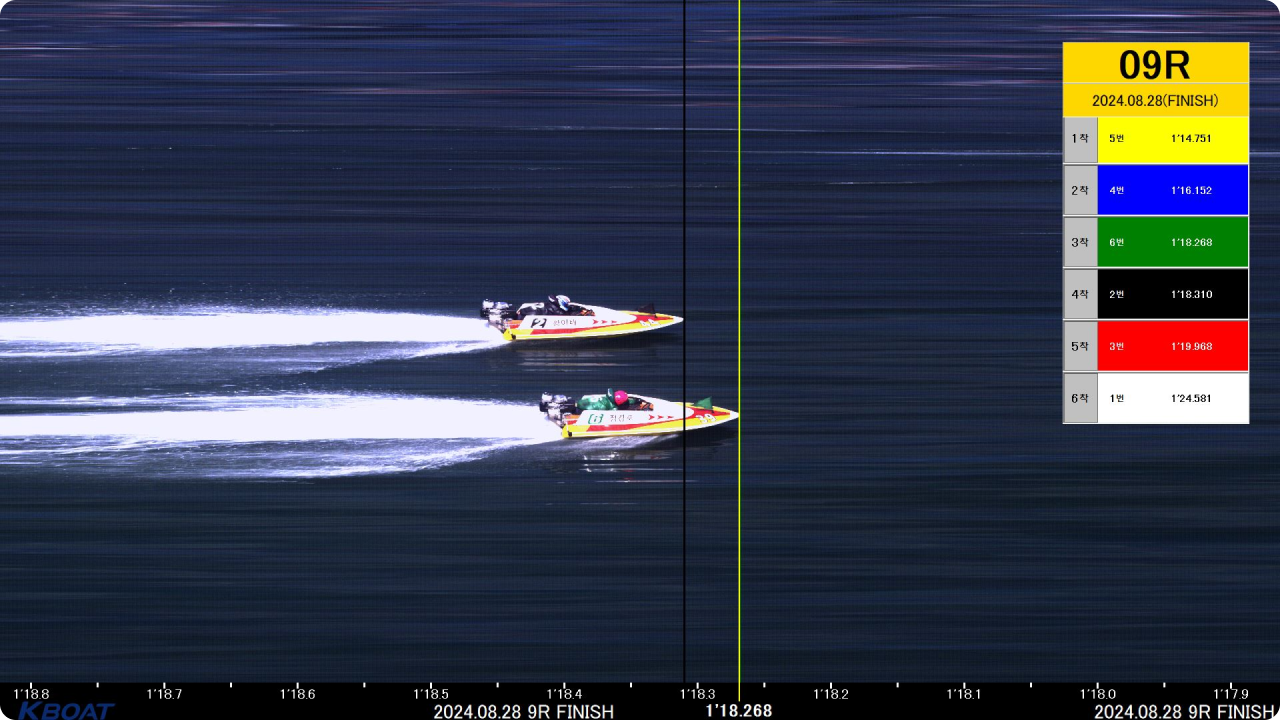

Please wait a moment!
The page is loading!


The page is loading!
The eyes and ears for a fair race, K-Motorboat racing judgement systems
There are strict rules and judges to enforce them in K-Motorboat racing to ensure fair competition. Learn more about the refereeing judgement in K-Motorboat racing.
The Judges’ room is located at the highest point in the central stand, overlooking the course. Decisions on start judgements, disqualifications, race violations, and placing judgements are made in the judges’ room.
For start and placing judgements in a motorboat race, line-scan cameras are used to capture and record the moving objects (motorboats). The start judgement is photographed at intervals of 1/2000th of a second, from 1 second before to 2 seconds after the start time.
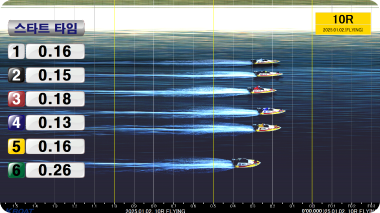
Normal Start Photo
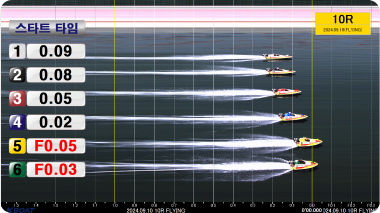
False Start (F) Photo
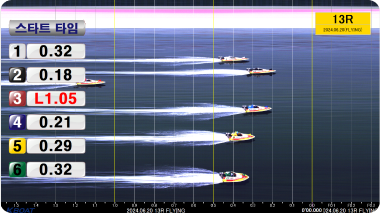
Late Start (L) Photo
Placing judgement is recorded in 1/2000th of a second intervals from when the first place motorboat crosses the finish line until the last motorboat crosses the finish line, and placing videos are displayed on the scoreboard if necessary.

Placing Photo
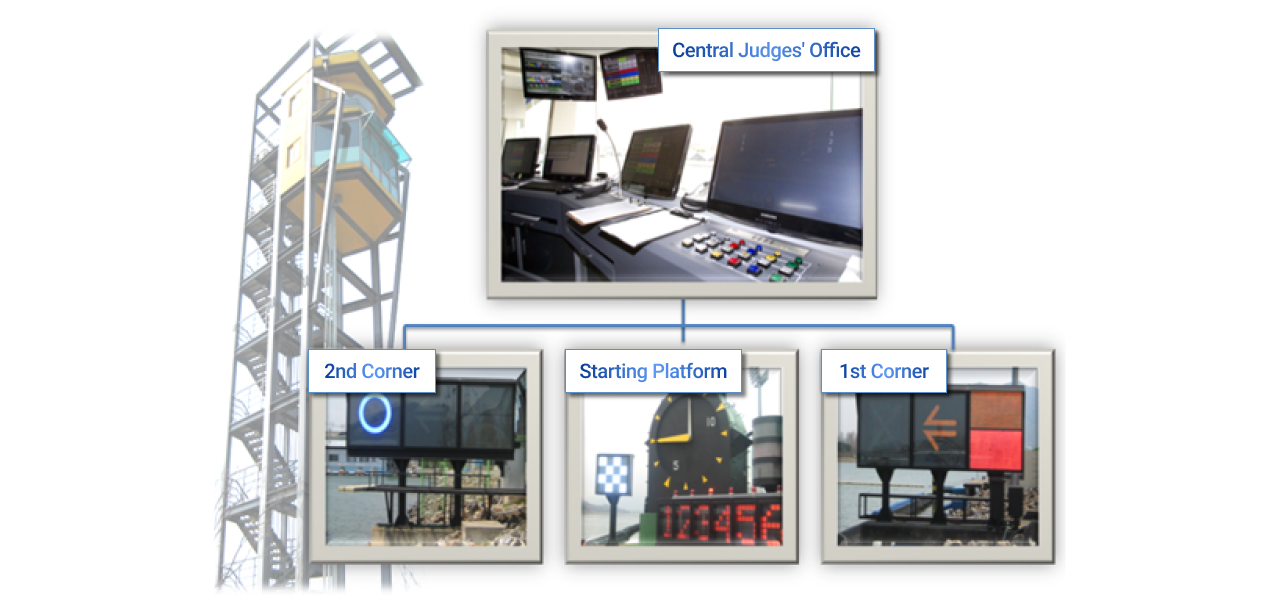
Automated race control equipment, head judge control system, assistant judge control system, flying start judgement equipment, placing judgement equipment, official clock control system, introduction run measuring system, race count system, display control system, race progress monitoring system, referee-exclusive camera control system, operation facilities, detection facilities, and automated control equipment
Official clock, checker light, three-colour signal light, disqualification, withdrawal display light, and night race LED lighting system
Normal start display light, danger signal light, navigation instruction light, and referee-exclusive camera
The introduction run automated measurement equipment operates by using laser sensors to measure a straight 150m distance, set between the head judge's room and the 2nd corner judges' tower. When a motorboat passes through, the equipment detects the boat and records the time.

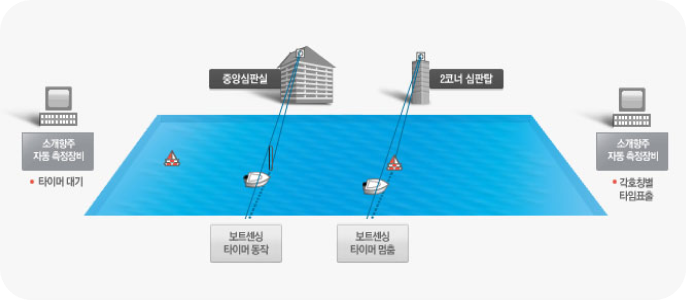
The flying judgement equipment detects violations of the start procedure by using a line-scan camera. It captures images of motorboats immediately after they pass the start line upon completing standby manoeuvre. The equipment determines violations and
records start times, which are displayed.
The camera captures for a duration of 3 seconds, starting 1 second before the designated time, based on signals from the official clock.

The placing judgement equipment verifies and publishes the race order, race records, and placing results table using images captured by a line-scan camera when motorboats cross the finish line. It operates continuously from the time the first place motorboat approaches the finish line until the last motorboat crosses it, recording at 1/2000th of a second intervals.
